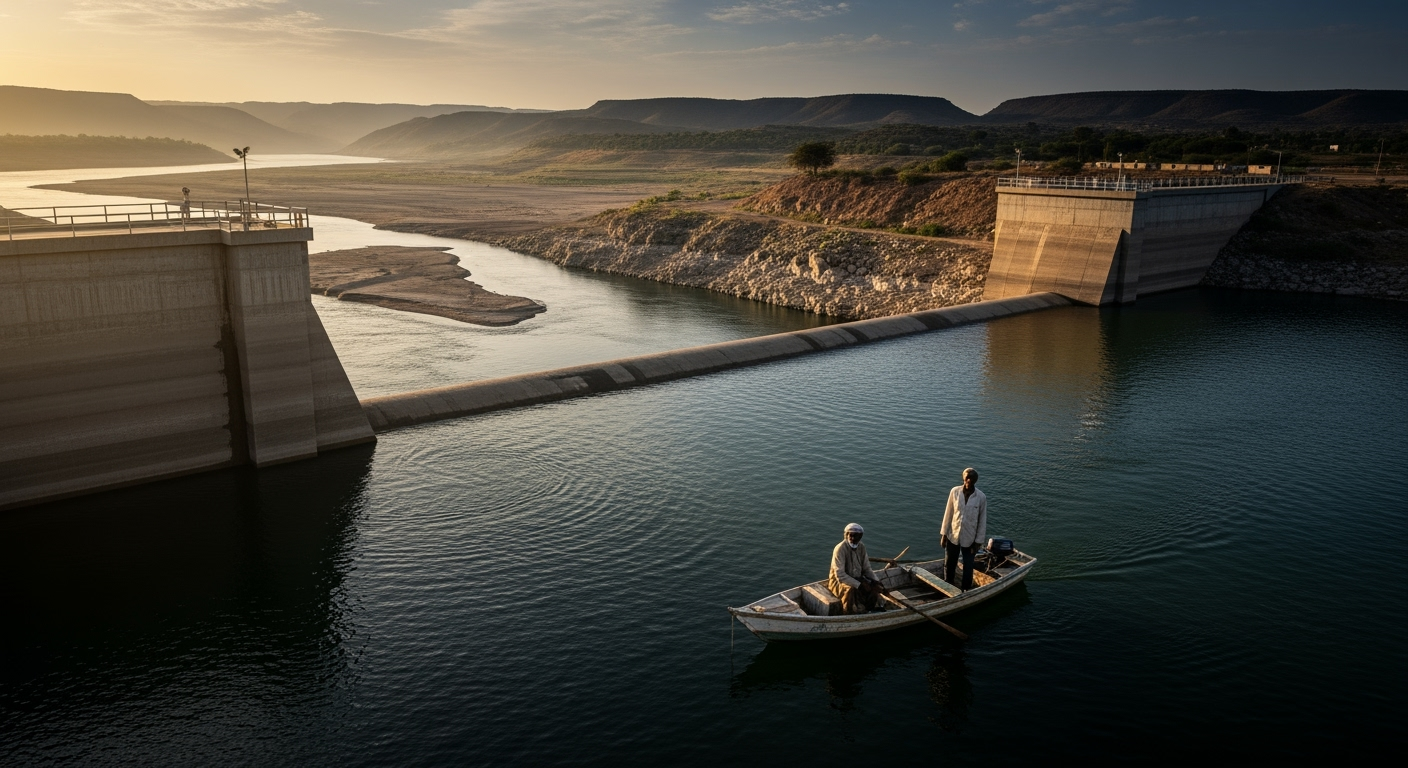Related Articles

The Unseen Costs: Dissecting the Dark Side of Viral Food Trends

Solar's Bold Horizon: Powering Earth and Beyond in a New Energy Era





ADDIS ABABA, ETHIOPIA – After more than a decade of construction and diplomatic friction, the Grand Ethiopian Renaissance Dam (GERD), Africa's largest hydroelectric project, has been formally inaugurated, marking a pivotal moment in the geopolitics of the Nile River. While Ethiopia hails the monumental structure as a symbol of national pride and a cornerstone for its economic development, downstream nations Egypt and Sudan view its full operational status with deep apprehension, fearing catastrophic implications for their vital water supplies and regional stability. The completion of the $5 billion dam, located on the Blue Nile, amplifies an already tense dispute over the allocation of the Nile’s life-sustaining waters, leaving a binding agreement between the three nations elusive.
For Ethiopia, the GERD represents a transformative leap towards energy independence and economic upliftment. Officially declared complete by July 2025, with inauguration ceremonies held in September 2025, the dam now stands as a testament to Ethiopian ambition. The sheer scale of the project is staggering: measuring 1,800 meters wide and 175 meters high, its reservoir is capable of holding up to 74 billion cubic meters of water, a volume comparable to Ethiopia's largest natural lake, Lake Tana. Since early 2022, the GERD has been generating renewable hydroelectric power, and its full capacity of 5,150 megawatts is expected to double Ethiopia's current electricity generation. This power is critical for a nation where nearly half of its 130 million citizens lack reliable access to electricity.
Ethiopian officials assert that the dam is not merely a domestic project but a regional integration initiative designed to foster cooperation and shared benefits. Prime Minister Abiy Ahmed has repeatedly maintained that the GERD will regulate water flow more consistently, control floods, and enable electricity exports to neighboring countries like Kenya and Djibouti, thereby contributing to broader Horn of Africa development plans. The project, largely funded through domestic bonds and citizen contributions, has become a powerful symbol of national unity and self-reliance. Addis Ababa insists on its sovereign right to develop its natural resources, arguing that the dam will not detrimentally affect downstream nations' water shares.
In Cairo, the narrative surrounding the GERD is one of an existential threat. Egypt, a predominantly desert nation with over 110 million people, relies on the Nile River for more than 90% of its freshwater needs. Any significant reduction in the river's flow could have devastating consequences for its agriculture, economy, and population. Historical agreements from 1929 and 1959, largely influenced by colonial-era dynamics, allocated Egypt 55.5 billion cubic meters of Nile water annually and granted it effective veto power over upstream projects. Ethiopia, however, was not a party to these treaties and views them as inequitable.
Egypt's concerns are compounded by its already growing water deficit; its annual needs, currently estimated at 114 billion cubic meters, far exceed its traditional allocation. A recent study indicated that even a decrease of just 1 billion cubic meters of water could eliminate over a million jobs and cause an annual economic loss of $1.8 billion in Egypt. Egyptian officials have repeatedly accused Ethiopia of "unilateral measures" and operating the dam in violation of international law, considering water security a national security concern. Recent uncoordinated high water discharge from the GERD has been blamed by Egypt for severe flooding in its northern provinces, submerging farmland and village homes. Egypt has consistently called for a legally binding agreement to govern the dam's filling and operation, including provisions for dispute resolution and safety measures, a call that has thus far gone unheeded.
Sudan, situated immediately downstream of the GERD and at the confluence of the Blue and White Niles, finds itself in a more nuanced position. While sharing Egypt's apprehension about Ethiopia's unilateral actions, Khartoum also recognizes potential benefits from the dam. The GERD could help regulate the volatile flows of the Blue Nile, reducing catastrophic annual floods that have historically devastated eastern Sudan and offering more consistent water availability for irrigation. There is also potential for increased hydropower generation stability for Sudan’s own dams and a long-term boost to its agricultural sector and GDP.
However, these potential gains are overshadowed by significant risks. Sudanese officials remain deeply concerned about the absence of a joint coordination mechanism for the dam's operation. Uncoordinated water releases, whether too much or too little, could endanger Sudan's own infrastructure, impact agricultural planning, and exacerbate humanitarian crises, particularly during critical periods. Khartoum is actively pushing for technical and operational guarantees to safeguard its dams, especially the Roseires Dam, and to ensure predictable water management.
The inauguration of the GERD without a comprehensive, legally binding agreement underscores a decade of stalled diplomatic efforts. Numerous mediation attempts by international bodies, including the African Union, the United Nations, the United States, and the World Bank, have failed to bridge the gap between the riparian states. The crux of the disagreement lies in conflicting interpretations of historical water rights versus equitable utilization principles. Ethiopia and other upstream nations have advocated for the Cooperative Framework Agreement (CFA), which seeks a more equitable sharing of the Nile's waters. However, Egypt and Sudan have rejected the CFA, arguing it undermines their historical rights enshrined in colonial-era agreements.
The dispute has deepened regional mistrust and reshaped geopolitical alignments. Egypt has reportedly strengthened ties with countries like Eritrea and Somalia, both of which have tense relations with Ethiopia. Analysts note that the GERD has effectively ended Egypt's longstanding monopoly over Nile water distribution, shifting the political center of gravity upstream. The intertwining of Ethiopia's domestic development ambitions with its regional aspirations sets the stage for continued friction with neighbors and external actors.
As the GERD officially enters its operational phase, the imperative for a cooperative and legally binding framework for its management becomes more urgent than ever. While Ethiopia emphasizes the dam's role in lifting millions out of poverty and fostering regional integration, Egypt and Sudan remain focused on safeguarding their fundamental water security. The absence of a trilateral agreement raises concerns about future water scarcity, environmental impacts, and the potential for destabilization in a geopolitically sensitive region. For the hundreds of millions living along the Nile's banks, the long-term impacts of the GERD will hinge not only on its technical capabilities but on the political will of all three nations to forge a sustainable path for shared prosperity through diplomacy and genuine cooperation.